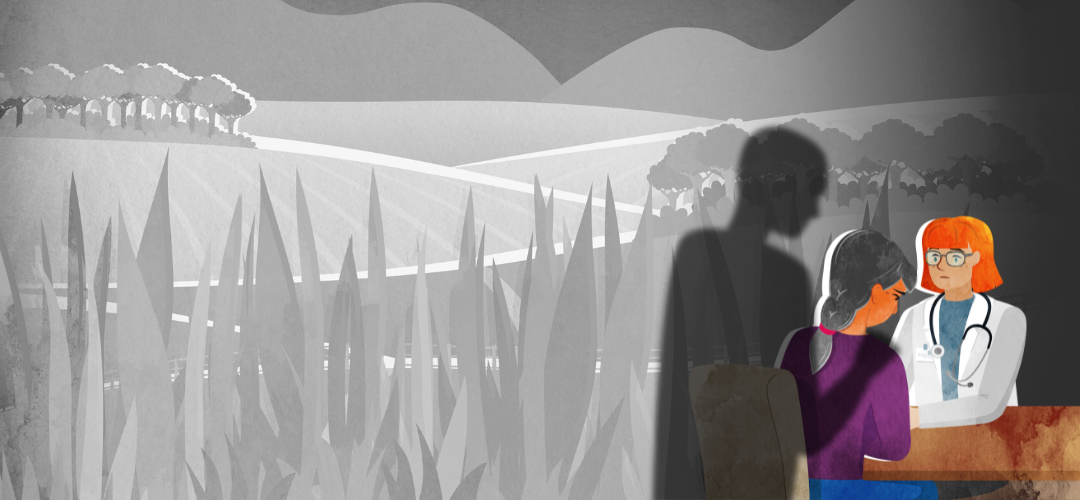Domestic violence and abuse in rural areas: How professionals and communities can save lives
Domestic abuse affects people across all demographics, but living in a more rural area presents unique challenges that can keep people stuck in dangerous situations.
In 2019 a landmark report “Captive and Controlled”, found that for survivors living in isolated rural areas, abuse can go on 25% longer than in urban areas. The report looked at how rural communities and people have played “second fiddle to the clamour of urban demands” and how “we see this in all sort of ways, from access to broadband and public transport, to the per person funding by government”.
For the first time, the 2019 report put the impact of rurality on domestic abuse, under the microscope and highlighted the differences between rural and urban experiences – both of abuse itself and of getting help.
The report found that survivors in rural areas are often lost to support, policing and criminal justice services. However, professionals and community members – like doctors, teachers, healthcare workers, social workers, volunteers, and even neighbours, friends, colleagues or even postal workers, can play an important role.
Let’s talk about why this is so important and how understanding domestic abuse in rural areas can change lives.
10 key challenges for people experiencing abuse in rural areas
1. Higher risk of harm
Risk of harm increases over time in domestic abuse, so when abuse lasts longer this is inevitable. Increased access to dangerous equipment compounds this.
2. Isolation as a weapon
Abusers exploit rural isolation, sometimes moving survivors to more rural settings and using the distance from family, friends, and services to maintain control.
3. Declining rural resources
Shrinking public services like GP practices, public transport, and broadband access further isolate victims.
4. Fragmented funding and services
Everyone working with and for victims of domestic abuse sets out to do their best, but often ‘hand to mouth’ funding has created fragmented, overlapping, and inefficient services.
5. Scarce and ineffective support services
Domestic abuse services in rural areas are harder to find. These services can also be less effective because there’s less understanding of rural domestic abuse.
6. Close knit communities hide abuse
Gossip, lack of privacy, and the ability of an abusive person to manipulate people in the community, can make survivors fearful of trusting anyone enough to speak out. It can also have an impact on the effectiveness of any response.
7. Patriarchal culture
Many rural areas adhere to traditional roles which limit women’s autonomy and access to support. Men tend to hold positions of power – land owner, landlord, farmer – even policeman. This makes coercion and control much easier for abusers.
8. Abuse lasts longer
In addition to being more isolated from support, moving risks losing specialist jobs that are hard to come by, and leaving animals or land tied to their rural life. People in rural areas are half as likely to report their abuse.
9. Challenges to adequate policing
Some of this is due to fewer female officers, or fewer officers overall, with appropriate domestic abuse training. Also, the more public nature of the police intervening in small communities can increase the abuse.
10. Data bias
Rural victims of domestic abuse are less likely to report, which means we know less about their needs and less about how to prevent it. It also means demand-led services are more likely put into urban areas where there is more reporting. So fewer services in rural areas meaning less reporting – and the cycle continues.
What can professionals and communities do
Learn to identify abuse
Abuse doesn’t always leave visible signs and there are many things to look out for. That’s why it’s so important to understand the signs and know how to respond safely and confidently.
Build confidence to respond safely
Responding to suspected abuse can be daunting. How do you build trust with someone who’s afraid to speak? What if you’ve misread the situation? What if intervening makes it worse? Knowing how to safely offer help can make all the difference. Several of our domestic abuse training sessions have been specifically tailored to give professionals the knowledge and skills to do just this. These sessions are the starting point for anyone who might encounter those experiencing domestic abuse in their work or volunteer roles. Find out more.
Creating safe spaces in community
Giving opportunities for people to get help and feel supported can be straightforward. Find out more about J9 safe space venues and how to become one here.
Free training
J9 Safe Spaces
How you can help
No matter how much time, money or resources you can afford to give, your support will make a difference.
£10
Give monthly
Could pay for four children
to take part in our early intervention projects
£30
Give once
Could pay for one primary school child to receive our healthy relationship education program
Support equation
Check out the other ways you can support us

